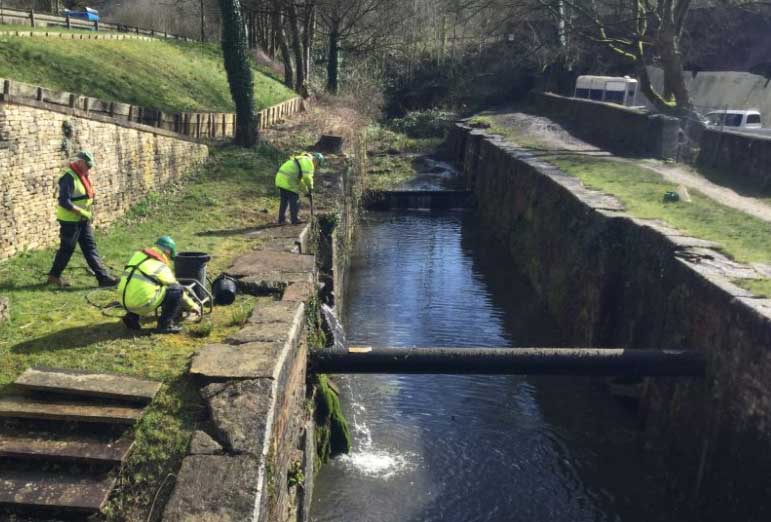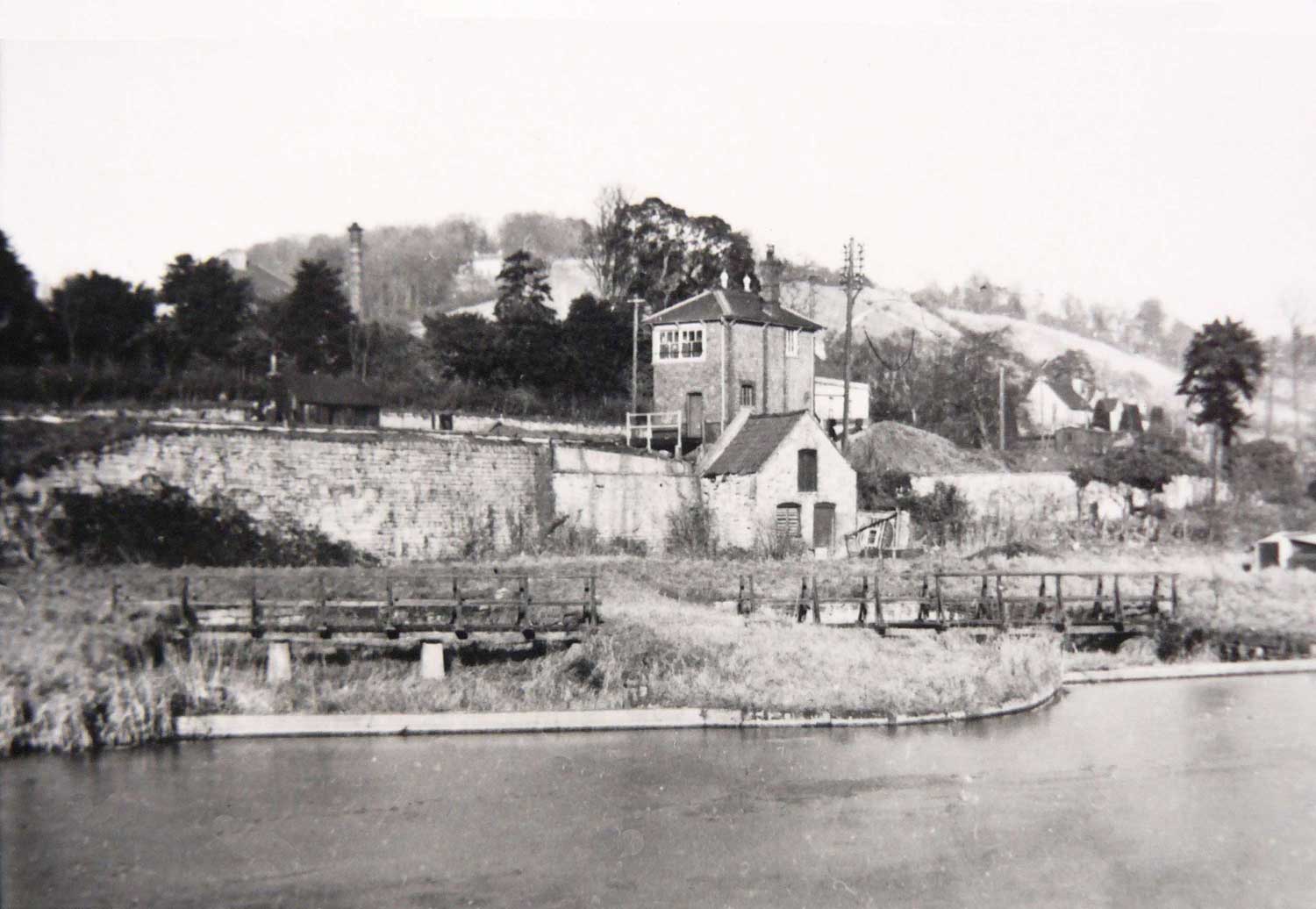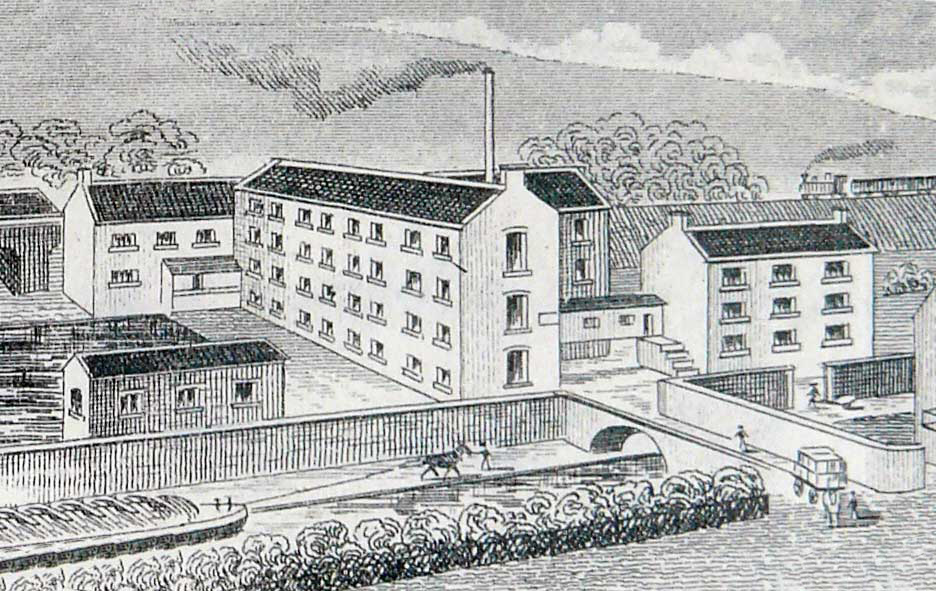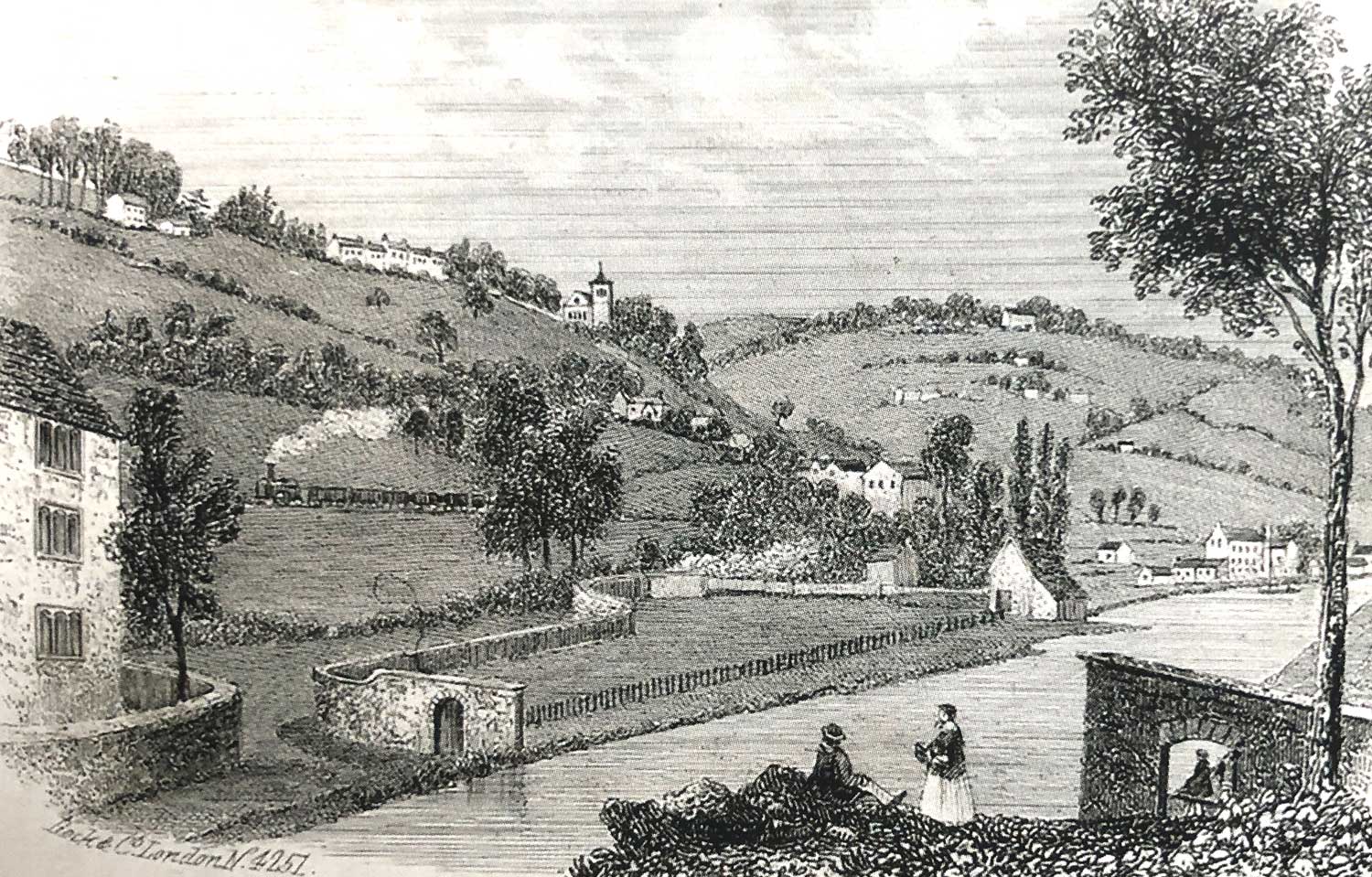Beside the canal at Bourne was an important boat building and repair yard.


This lock is unique, as it is wide enough to take barges from the Severn and long enough to take barges from the Thames. This was necessary so that Severn barges could reach the dry docks in the boat-building and repair yard, located approximately one hundred yards to the east.
To conserve water, the T&S Company required a narrowboat to wait for another so they could both go through a lock together, particularly at this big lock. When one boat passed through on its own in 1854, the master was taken to court, and as he could not pay the fine, he was committed to Horsley House of Correction for 14 days.


From the start, the T&S Company established a boat-building yard to the east of Bourne Lock. The site was later dominated by the GW railway embankment, which crossed the canal via a viaduct.
Over the years, the yard produced hundreds of barges and narrowboats. The facilities included a timber store, two dry docks for repairing vessels, a steam chest for bending wood and a house for the resident shipwright.
The early shipwrights were much involved with developing vessel designs to suit the different locks of the two connected canals.


This sketch shows how Bourne Mill became enclosed by the T&S Canal in the foreground and the GW Railway embankment behind.
By the 1860s, the mill had transitioned from producing woollen cloth to the production of mattress-wool, mill-puff, and shoddy. In the twentieth century, it made umbrella and walking sticks.
The buildings are now occupied by a variety of small businesses, including the Felt Café. The millpond on the left has been converted into a car park.


Brimscombe Basin was surrounded by a stone wall with occasional gateways. Most of these structures have disappeared, but the gateway adjoining Bourne Mill and about 60 yards of wall still survive beside the riverside path. This 9 ft high length was constructed in 1801 to enclose a field adjoining the basin, which was being developed as a ‘new wharf’.
The restoration of this wall was supported by a £80,000 grant from the People's Millions Lottery in 2008. The public voted for the grant after various projects were featured on local ITV.
Boatman sent to prison from Stroud Journal 19 August 1854 p4.
History of Bourne Mill from https://www.british-history.ac.uk/vch/glos/vol11/pp119-132.
Construction of the Port Wall from TS/164b p187, 205.
Port Wall restoration from the Trow Archive.